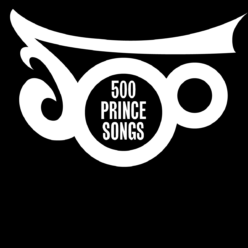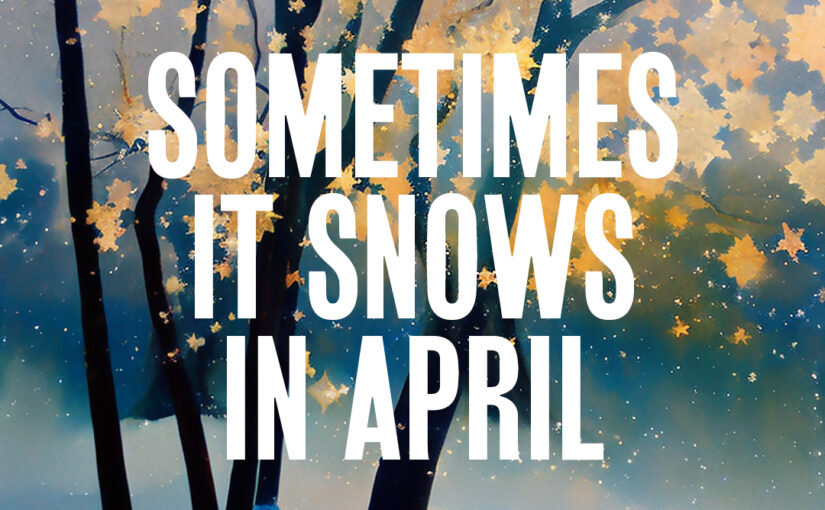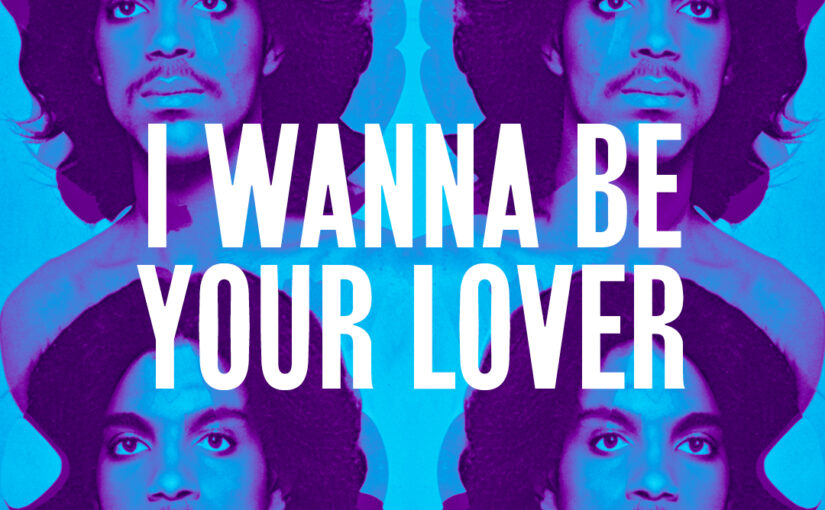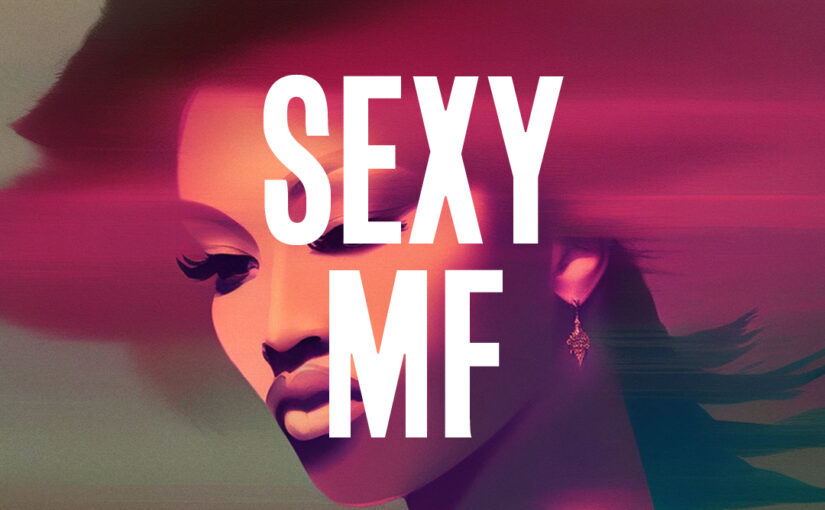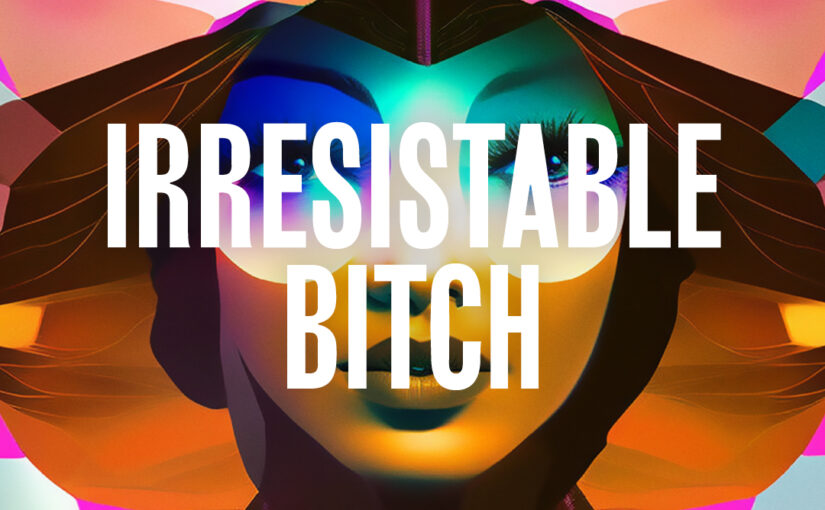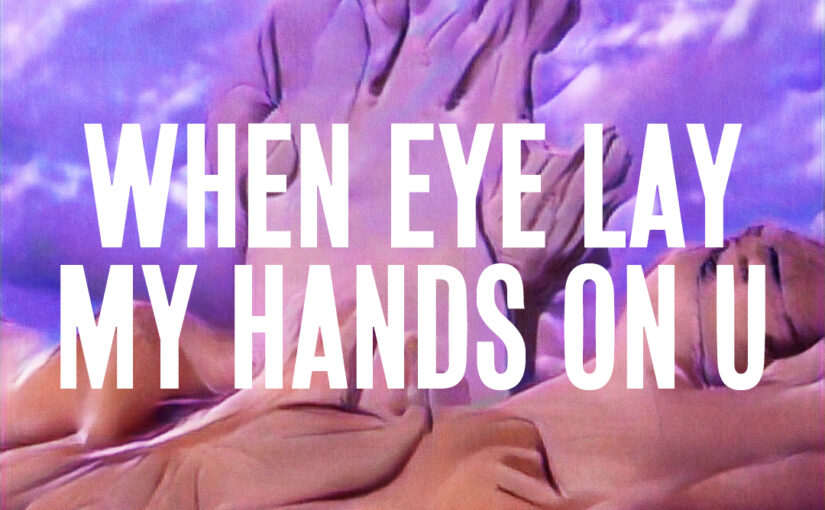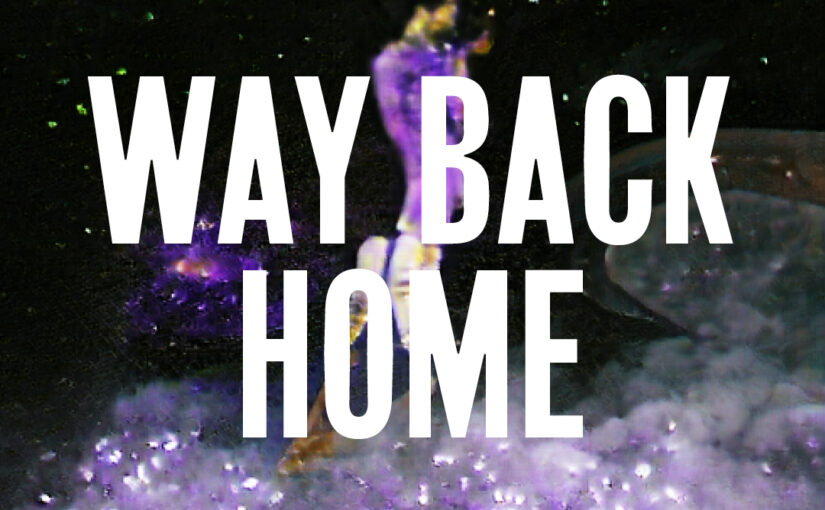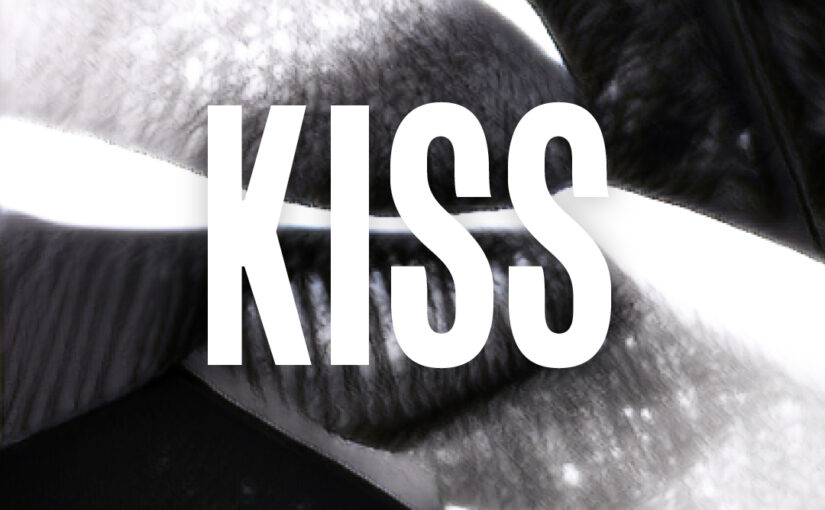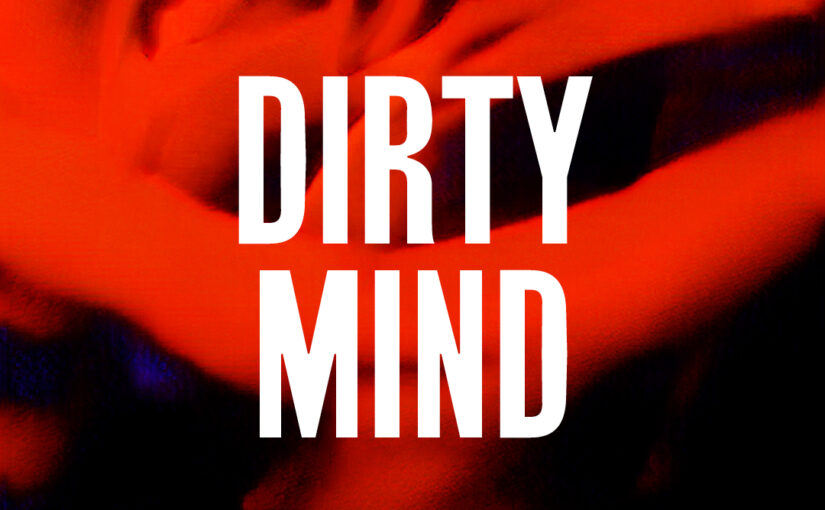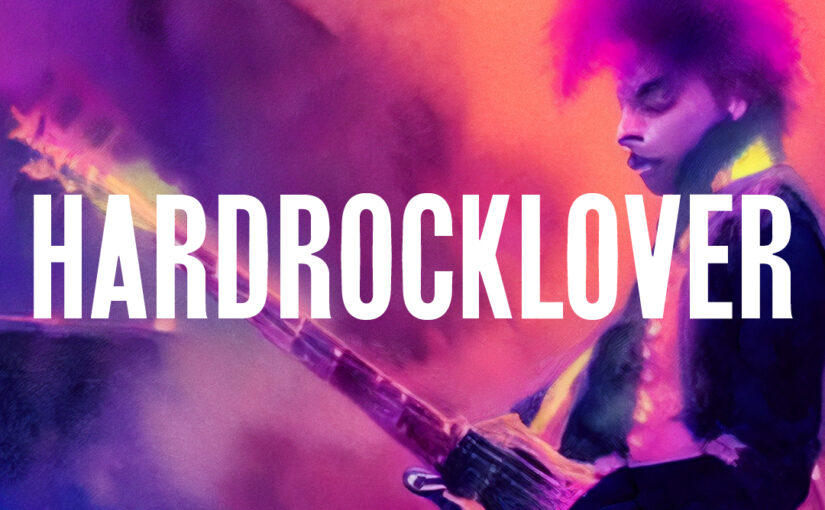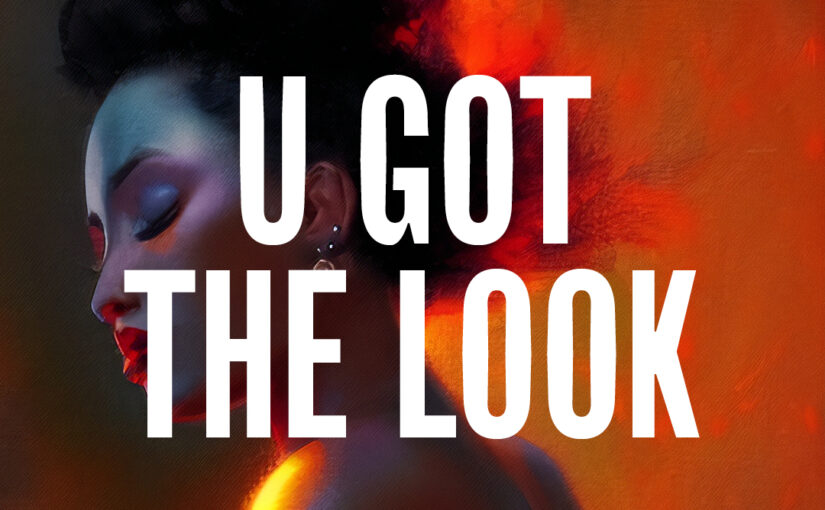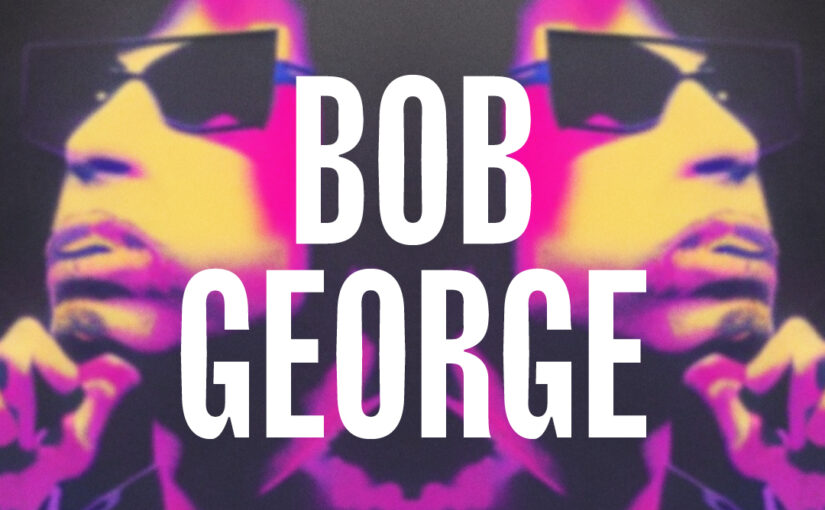Sign o’ the Times (1987)
When the author Vladimir Nabakov was asked about his novels’ beastly characters, he replied that they were outside his inner-life like the monsters on a cathedral facade, placed there merely to show the demons that have been booted out. Prince uses Camille in a similar way. His gender-fluid alter-ego is not just a pitchshifted voice, it is a vehicle for Prince to exorcise his dark thoughts, or at least launder them into art he can share with the world without the cognitive dissonance of endorsing the message with his birth name. Strange Relationship is one those song dredged up from the darker recesses of his pysche that has its lead vocals attributed to Camille, but it was written years before that character was born. First recorded in 1983, the song’s lyrics portray a relationship that’s more sadistic and unhealthy than strange. Jill Jones has said Prince wrote it about Vanity after he became jealous of her seeing other people – feelings he also channelled into the deceptively viscous Wonderful Ass (although Wendy believes Susannah was the muse for that one). To me, Strange Relationship sounds like the darker cousin to When You Were Mine, where this time the green-eyed monster isn’t fanning the flames of love but instead causing them to emit a toxic smoke that’s captivating to watch dance. The ghost of a sitar synth haunts the background – traces of the time it was in Wendy and Lisa’s care before their involvement was whitewashed out post-Revolution – while a monotonous beat gets a kick out of doing you cold. The effect is beautiful yet sinister, like a young Imelda Marcos. Unlike Wonderful Ass, this song refused to be banished to the vault. It made it onto three abandoned albums (Dream Factory, Camille, Crystal Ball) and the same amount of released ones (Sign o’ the Times, One Night Alone… Live!, Piano and a Microphone 1983). It also appeared on a couple of concert home videos and performed live regularly up to and including his final tour. Out of all the intricate gargoyles adorning Prince’s palace, Strange Relationship is the one whose troubled gaze you couldn’t escape.
41: Sometimes it Snows in April
Parade (1986)
The utter ridiculousness of creating this ranked list comes into sharper focus when I have to consider songs like this. How can you compare this reservoir of loss, this reminder of grief, next to the sheer funk lunacy of Sexy MF or iconic spectacle of Purple Rain? It’s like ranking emotions. All are part of the full kaleidoscopic experience of life and should be embraced, not compared with each other and found wanting. But it’s too late to question the premise now. Sometimes it Snows in April was much loved before Prince left this realm but has become imbued with a new metaphysical aura since. In Tess of the D’Urbervilles, Thomas Hardy writes about the date of Tess’s death being “a day which lay sly and unseen among all the other days of the year, giving no sign or sound when she annually passed over it; but not the less surely there.” Tess is frustrated at not knowing what she considers to be the most important date in her life. When you find out that Prince recorded his mournful requiem on 21 April 1985, the pre-anniversary of his own passing, you wonder if he, at least on some level, knew his? The song was written years before – at one point it was on the tracklisting for his debut album – but something compelled him to go into the studio on that particular calendar date and put it to tape. Prosaic answers seem inadequate. It was his first week back in the studio after wrapping up a five-month tour, plus he had already alluded to the song earlier that month by using the phrase “sometimes it snows in April” in a released statement saying he was quitting live performing. If, as has been suggested, Christopher Tracy is a coded name for Christ, Prince may have pulled the title out of storage around this time because of a controversy surrounding the final show of his tour, the one said to be his last for “an indefinite period of time” (although in actuality only two months). Local religious groups were outraged that this concert had been moved to Easter Sunday and the resulting news coverage may have reawakened Prince’s own Easter elegy and caused it to became one of the first songs worked on when back in the studio later that month. It’s just a coincidence that the dates match. But the song seems too powerful for mere coincidences. We weave myths to make sense of the irrational but unfortunately Sometimes it Snows in April will always be a reminder of the inexplicable: a Princeless world.
42: I Wanna Be Your Lover
Prince (1979)
Prince’s debut ran over budget and over time, so with his second album he was eager to show Warner Bros he wasn’t a boy doing a man’s job. No opening with an experimental intricate acapella workout this time around. A single drum hit to get your attention and then it’s straight to the best hook he had in his bag. Boom. A glorious disco strut to the face. Lead single. Point made. I Wanna Be Your Lover is primed for the airwaves – sleek pop but with a cheeky wink behind the radio controller’s back via that suggestive pause in the chorus. Here on the album, as soon as he clocks up a radio-edit’s worth of vocals, Prince drops the mic and allows the song to bloom into a funk-disco instrumental for the track’s remaining majority – like the previous album’s Just As Long We’re Together but without the hunched shoulders. That clenched era’s gone. There’s now space in his grooves to climb inside. To roam free and lose baggage in. Without vocals, he gives us an unencumbered view of this majestic expanse so that he’s certain the new Prince – more confident, less over-thinking – isn’t lost on us and then he hits us with the second single immediately after, mindful of his mission to make a quick impression. That in turn is followed by another single on the third track. He’s determined to win us over. We’re being courted and it’s all too easy to believe him when he tells us he wants to be our lover, brother, mother and sister too. Yet, according to Prince’s original liner notes for The Hits compilation, the actual target of those proto-If I Was Your Girlfriend lyrics is the jazz musician Patrice Rushen, who had helped him with the synth programming on his first album. He had a crush on her at the time and reveals that not only is the song about her, but it was also originally recorded as a demo for her. He either changed his mind or she turned it down, but a couple of years later she sent him Forget Me Nots with her sole crossover hit bearing more than a passing resemblance to his intended gift. Luckily, for whatever reason he kept I Wanna Be Your Lover for himself and it became his foothold to the next strata of fame. It was his first proper hit. His first music video. His first TV performance. The world was beginning to wake up to Prince and superstar-dom would soon come… running.
43: Sexy MF
O(+> (1992)
At the start of the 90s, Prince’s new favourite hang out – his Glam Slam club – exposed him to a lot of hip hop, which started to have an effect on the music he was making. He told Spike Lee in 1997 that AMG’s Bitch Betta Have My Money was the biggest club song during this period and he heard it so much he got “swayed by the current”. The month it was released, Prince went into the studio and recorded Sexy MF, a swaggering party track pumped full of testosterone, but with a message that “this ain’t about sex, it’s all about love” – a rap more ballsy than AMG’s tired pimp porn. Any rapper can cosplay a pimp but it takes real bravado to split from the herd and spit bars about not being ready for a sexual relationship. Sexy MF was written while Prince was courting but not yet sleeping with Mayte, who was then 17 years old. He was speaking to her via his music, and as the opening lines of The Morning Papers tell us and her: “he realized that she was new 2 love, naive in every way… that’s why he had 2 wait”. With its explicit chorus and off-brief Harlem Nights-quoting verse by Tony M, the sexual abstinance theme may not be immediately obvious, but Prince’s verses make clear that until they’re ready “to take that walk” he’s drawing the line at a “hug and a kiss”. Sexy MF’s video however walks back the sentiment. Prince writhing in a hotel room threesome, while singing to a fourth girl he’s led up to his room seems to bury the personal message under MTV clickbait (or whatever the offline equivilent word is) – although in this case he actually refrained from giving the video to the music channel, instead selling it direct to fans. I guess with the song having already imparted its message to his future wife, and away from the confines of the concept album where it sits with Love 2 the 9s as an audition for the Egyptian Princess Arabia before their relationship progresses to the next stage, Sexy MF is free from having to adhere to internal logic. Give the paying fans what they want: sex scenes, a topless Prince and comic thrusts of a gold gun microphone between his legs. And who’s paying attention to the verses anyway when the music is this funky? According to keyboardist Tommy Barbarella “it was recorded in about 20 minutes” and he hated his organ solo but Prince wouldn’t let him fix him it. The last album, Diamonds and Pearls, suffered from over-production so here on the first band-recording for the follow-up, Prince made sure he captured the spontaneity, resulting in the most James Brown thing he’s recorded since he reworked the Godfather’s Gravity for 1987’s It’s Gonna Be a Beautiful Night. While the hip hop world was scouring the founding father of funk’s back catalogue for loops, Prince had a band that could pump them out, royalty free.
44: Pink Cashmere
Anna Fantastic isn’t the only person claiming to be the inspiration for Pink Cashmere, but she is the muse for whom it will always be associated. She first heard it in 1988 on her 18th birthday, playing in the background of Prince’s house when he gave her a personalised coat of pink cashmere and black mink, along with a cassette of a different song he had written for her called Anna Waiting. She recalls she never recieved a copy of Pink Cashmere, recorded six months previously, and a little over a year later she left his orbit, not hearing the song again until it appeared on her radio out of the blue in 1993 – a single to promote his forthcoming Hits compilation. This greatest hits package included Pink Cashmere as one of four ‘new’ songs, all four beginning with the same letter. Unintended coincidence? Or a flex to show how much unreleased music he has in the vault that he only need open the P drawer? Whether there were other girls and other coats (Carmen Elektra claims to have one) is a matter for the gossip hounds but there is one important person to whom we know Prince gave the song after Anna left Minneapolis – the composer Clare Fischer, who annointed it with orchestral strings, gracing it with a class that the actual coat could never attain. His involvement starts subtly – dipping in and out of crystal blue rock-pools of acoustic guitar and drum machine. A playful ballet. As the track builds, the choreography intesifies and towards the end the orchestra find a new dance partner in the arrival of Prince’s axe. When the electric guitar and strings begin diving in and out of each other, they become the warp and weft of a loom weaving the greatest ballad this side of Adore. A tapestry to make Athena herself jealous. Maybe it’s out of goddess spite that Pink Cashmere was never given a proper home. It was considered for both the abandoned Rave Unto the Joy Fantasic album and Grafitti Bridge, but instead had to live in the shop window of The Hits and the Spike Lee playlist of Girl 6. Even the single bombed, with the newly-nameless Prince refusing to get behind his old material. For further ignominy, a reggae remix was made – a true abomination of a track, which I refuse to believe he’s behind but if so it was surely an act of sabotage. Luckily this monstrosity was never released commercially. Maybe Pink Cashmere’s greatest insult was to see a pastiche, Beck’s (admittedly great) Debra, become more well known and loved, despite not even being released as a single. Because I never play the compilations, Pink Cashmere sits in storage, rarely touched, but on days like today when I remember, I pull it out and marvel at the handiwork. Here I go again, falling in love all over. I wonder if Anna does the same to the coat. Although, having seen the photos, probably not. I’m sure it’s a treasured memento and all, but let’s just say the garment doesn’t share the song’s timeless appeal.
45: Irresistible Bitch
Let’s Pretend We’re Married single (1983) / The Hits/The B-sides (1993)
Did Prince believe he invented rap with Irresistable Bitch? One of his recording engineers quoted him as saying so, but even if he never made this unfeasible claim about something written two years after Rapper’s Delight, he did namecheck the song in an interview to puff up his hip hop credentials. You can see his point. Irresistible Bitch shares territory with hip hop, not due to any bandwagon jumping, but as the result of a convergence of styles he was experimenting with at the time. The beat’s emphasis on bass and drums was a product of the Cloreen Bacon Skin improvisation that also birthed The Time track Tricky, and the half-spoken lyrics continued a style he used on All the Critics Love U in New York and Lady Cab Driver. He forged his own path there and the song later became part of rap history when it became his first to be sampled on a hip hop record. Admittedly, his next two singles were appropriated first – When Doves Cry and Erotic City inspired 1984’s When Doves Cry Rapp and Erotic Rapp, but to my knowledge the first actual sample (ie. not an interpolation) was Irresistible Bitch’s bell-like synth hit, that cropped up on electro records in 1985, before Rick Rubin used it later that year on LL Cool J’s Dangerous. Hip hop had started to embrace Prince and he returned the love with a genuine rap track: Holly Rock. It’s just a shame Irresistible Bitch’s contribution to the rap canon wasn’t more than a one second sample. Despite its misogynistic and agressive-sounding title, its lyrics are suprisingly submissive. Let’s Pretend We’re Married on the A-side is much more akin to the domineering, hyper-sexualised tide that hip hop would begin to be carried away by. Who knows what strange and beautiful terrain hip hop would be in today if Irresistible Bitch had indeed invented rap.
46: When Eye Lay My Hands On U
Internet download (2001) / The Chocolate Invasion (2004)
In the midst of Prince’s conversion to his new faith, he wrote When Eye Lay My Hands On U, a song that viciously rejects the idea of an eternal afterlife by describing sex as “the only forever we’ll both obtain, the only joy in this forsaken game”. This blasphemy (which he belatedly attempts to cover up with a “god forbid” disclaimer the second time around) is a cathartic counter-attack of raw sexual energy, the bark of a wild dog refusing to be leashed, and is why Prince warns us in the opening line that his message is “not meant for transmission”. Welcome to his long dark night of the soul where a challenger for the title of one true God steps forth as the primordial Eros – not the nuetered Eros of later poetry, the mischievous son of Aphrodite whom the Roman’s renamed Cupid, but the awesome elemental power that the Greek poet Hesiod described as the most beautiful of all the deathless gods. This divine loosener of limbs enters the arena and teases X-rated lyrics out of Prince, causing him to spin a tale of foreplay that culminates in an homage to the Santana song Europa. This results in what may be the most sensual guitar-playing he has ever committed to tape, but behind the sensuality lies a violent clash of swords. Prince once said he doesn’t feel sexy when he plays guitar, he feels angry. Here we hear him furiously shredding his sexual frustration with every sinew of his body, resisting being ordained by Eros’s intoxicating power, and in the process creating a tender tabernacle for his new Lord to step into. By the end, a defeated Eros crawls back into his demoted role as chubby cherub of the Renaissance and an ashamed Prince buries this profane lapse of lust in a place that only NPG Music Club members could access – first as a download, and then three years later on a compilation which, to date, still hasn’t seen a physical release. In 2009, with the battle for his soul comfortably behind him, Prince relaxed his view that the song’s message “should only be accessed in the privacy of your mind” and began performing it live, most memorably as the opener to his Montreaux appearances, where he skips over the blasphemous line in the first show, but in his second appearance summons the courage to scream it to the sky. The crowd melts when his seduction reaches its apex, the point where his fingers reach the cap stone and the Santana solo is unleashed to mark the explosion of ecstasy, but to those listening carefully they may hear, behind its bars, the beautiful torturous screams of a banished god.
47: Movie Star
Unreleased (1986) / Crystal Ball (1998)
The Crystal Ball liner notes mention that Movie Star was created for The Time. Of course it was. It’s the most Morris Day thing Prince has ever written, including everything on the first three Time albums. There’s just one problem: he recorded it two years after The Time broke up, and at a point when him and Morris weren’t exactly on speaking terms. With that relationship on ice, Prince had lost the main outlet for a very particular part of his psyche. But like a breastfeeding mother, he still needed to express to prevent a leak. He had just shot a movie where he had tapped into that part of him by playing a gigolo with Morris’s ex valet as sidekick, but conversely that only made the urge to purge worse, as being the lead in your own feature film is hardly a tonic for narcissism – so, as soon as he got his new home studio up and running, he recorded Movie Star, a goofy portayal of the vain side of his personality to readdress the balance and prevent him from taking himself too seriously. Therefore, his message in Crystal Ball is misdirection. Movie Star wasn’t created for The Time, but for his ego-projection that he had previously cast onto the band’s frontsman. No one was around to play this character from his psyche so he takes on the role himself – a role you can tell is intended to be a version of Prince because he namechecks his own head of security, Gilbert – someone no other star would be getting “free reign” from. He just wants you to think it was written for Morris because he wants daylight between the song’s comic persona and his Prince brand. But distancing himself from it didn’t stop Movie Star being a hit with fans. The Crystal Ball liner notes tell us the track is D’Angelo’s favourite bootleg. It’s Questlove’s too, who only placed it behind Baby I’m a Star in a top ten list of Prince songs he gave Rolling Stone magazine. Not a bad legacy for a song that, if we’re continuing the breastfeeding metaphor, was recorded as a pump and dump. It was never performed live and although it was briefly considered for the Dream Factory project, it was shelved for 12 years having already served its purpose as comic relief to prick the ego. Luckily, in a bid to stick one to the bootleggers, the song finally saw a release on Crystal Ball in 1998 with a new Jam of the Year intro. This may have awakened something dormant within him, because a year later he laced up the character’s size-six Stacy Adams once more and stepped out as Prettyman.
48: Hot Thing
Prince pursues his Hot Thing over forbidden waters, in a cold drum-machine patrol boat that leaves capsized ships in its wake. His vessel is stripped back and hydrodynamically honed for the hunt. Laser sights locked on. Cruise control engaged. It’s all too easy. Then a stowaway is discovered on board – Eric Leeds with a rogue saxophone that begins to jam the precision technology and threatens to lose the chase. The devil’s horn, wild and organic, turns the sea’s white caps into galloping horses. Fifty Nereids glide under the surface. Spume and spray soak the deck. Luckily Prince knows how to harness this untethered, unpredictable spirit and tames it with freestyle incantations of his own (a scat taught to him by the Coco Boys). By the end of the track the saxophone is at heel and responding to attack commands. It’ll be utilised again on their next voyage – the extended mix – but this time the underlying tension and conflict will be replaced by Sugar Walls sea shanties.
49: Way Back Home / Affirmation I, II & III
Art Official Age (2014)
I humbly offer you my reading of the Art Official Age album. In its opening track, Mr Nelson’s class are told in Danish that they “have to do something that will change [their] life forever: open this cage.” He wants them to find the knowledge that will free them from the imprisoning illusion of the phenomenal world. The keys to unlock Maya. Morpheus’s red pill. Bill Hick’s rollercoaster. This threatens the power structures invested in the illusion and we hear the teacher being waterboarded, interrogated and finally losing consciousness as track 1 ends HAL 9000 style. Cut to 45 years in the future and Mr Nelson is woken up in a “brand new age” by an agent who says she’s there to help him but the way her voice glitches on that phrase makes you wonder. A breakdown follows as he acclimatises to this “place that doesn’t require time”. He learns about the new standard of funk and re-experiences old feelings of desire, love and heartbreak which he sloughs off like a snake shedding its skin. Solve et coagula. He’s now ready to receive the affirmation that “there are no such words as me or mine”. This leads to the epiphany of Way Back Home and the realisation all he ever really wanted was to return to the all embracing oneness of the universe. Away from ego and concept of self. He tried doing this in the past with apocalyptic funk’n’roll partying and sex, but this obliteration of self was only momentary. A brief respite from the alienation he was feeling. He now sees that time isn’t linear and understands he is “everything and anything [he] can think of”. The agent, now speaking telepathically, leaves him with the words “there really is only one destination and that is you, all of it is you”. The border separating himself and the cosmos dissolves. He has found his Way Back Home and the song reappears to see us out. And if you have the album on loop, the next words you’ll hear are Mr Nelson welcoming you home and telling you “you’ve come a long way”. Time is circular. Rinse. Repeat.
50: Kiss
Parade (1986)
How do you write about Kiss? Kiss is Kiss. It eludes deconstruction. It evades pinning down. Instead you usually hear of the track’s gestation – the oft-told journey to Mazerati and back. An interesting back story but one that fails to capture the song’s sparse oddness. The Hits liner notes attest to its out-of-placeness, describing the track as both weird and strange, and how Prince thought it never quite worked on the Parade album. It was a late addition to the tracklist and the only one he chose not to send to Clare Fischer for orchestration. He wasn’t happy with how it sounded live either, constantly switching up the arrangement but never able to satisfyingly replace or recreate the gated acoustic guitar (the one from his original demo) that makes up the bulk of the track. Yet, like the sculptors Rodin and Brancusi before him, Prince’s totem to the humble kiss is considered some of his best-known and well-loved work. Its ubiquity, as I wrote about Alphabet St, prevents you from noticing its kook anymore. You no longer hear its disparate elements: the three-chord blues; the minimal dead beat; the James Brown turnarounds plucked straight out of papa’s new bag. It all fits together as a glorious whole and can’t be altered without the magic falling apart. If you want to hear how it could have sounded, head to the extended mix where the second half is a far cry from the usual Marie Kondo approach. Bass, synths, tomtoms and horns all get thrown in – discarded experiments that have been tucked away in the 12″ like the tangle of electrical cables and sticky tape stashed in your dad’s odds-and-ends drawer. If this is how he puts to use your extra time then I’d request it back. It ends in discord as Jill and Prince roleplay a couple arguing over the tv channel. A distraction to make you forget the vandalised rainbow you just experienced. There’s a reason why KISS is a common acronym to keep it simple, stupid. At the other end of the scale lies the acoustic demo, a minute-long cloud of an idea. Divine breath lacking the mortal clay that Mazarati’s producer David Z would provide. In between these poles, stands the Kiss that became a leitmotif, appearing on almost every Prince tour since its arrival and repeatedly referenced up until the sample kissing us farewell on his final album’s Stare. Now Kiss’s role is to echo down the ages, greeting and beckoning in newcomers at the gates of Prince’s vast domain.
51: Lovesexy
Lovesexy (1988)
During my first week learning to snowboard, I went to a festival on top of a mountain. Afterwards, I had the option of either taking the ski-lift down or doing my first black run. I was young, foolish and bullet-proof and never even contemplated taking the safe, sensible option. As soon as my snowboard pointed down the slope I realised my error. Everyone was leaving at the same time and it was so crowded I didn’t have the experience to stop or slow down without taking out the person to the left or right of me. As I hurtled through the melee of people, my conscious mind was so focused on avoiding a collision that it no longer concerned itself with remembering basic technique or unhelpful feelings like worry or panic. It was laser-focused on whatever fate threw my way at increasing speeds. I felt an exhilaration I’ve never felt since. This is what Lovesexy is to me: a gleeful surrender to the present moment. I’ve always found the highlights of Prince’s best songs are the points where he sounds like he’s lost control. The emotional breakdown in The Beautiful Ones; the unravelling desperation at the end of If I Was Your Girlfriend; the blurting out and immediate retraction of smashing up his ride in Adore. However, with Lovesexy it’s less a loss of restraint – an artist letting his emotions run away with him for his art, before carefully corralling them back under control – and more like a complete submission to an ego-obliterating higher power. What part of his life is he revealing to us here? It’s a poorly-kept secret that a bad experience with an ecstasy tablet caused him to pull the Black Album. It doesn’t take much of an imaginative leap to hear him glorify the drug in Superfunkycalifragisexy under the euphemism ‘squirrelmeat’ and he presumably didn’t want that on his conscience. Instead he released his ‘gospel album’ that told you to say no to any drug other than God. The ecstasy incident is most noticeably alluded to on Anna Stesia, where it’s retold as a battle for his soul between the devil (Spooky Electric) and God, culminating in the epiphany that ‘God is Love’ saving him from the numbness of his vices. He appears to reaffirm this divine message in the liner notes where he introduces the title track by defining Lovesexy as “the feeling you get when you fall in love… not with a boy or or a girl but with the heavens above”. However this could be an attempt to recalibrate the balance after the song itself careers wildly into uncontrollable lust, getting increasingly more sexually explicit after Cat’s vari-speed vocals morph into Prince’s Camille voice: a switcheroo that gives me goosebumps every time. The track deliberately blurs the lines between sex and divine love. Both involve a submission of self. A surrender of ego. And it’s in this overlap that Prince paints his concept of Lovesexy. But he’s painting with colours made newly available to him via narcotic means. Lovesexy is the ride before the crash. The acceleration from which there’s no gentle return to Earth. It’s not the everlasting high with no side-effects that Alphabet St paints it as. But the comedown is for later. On the mountain, as I zipped in and out of people, I thought I’d finally ‘got’ snowboarding. I hadn’t. I wasn’t in control. The only way I was stopping was by crashing, which luckily happened without taking anybody else out. It hurt. But I don’t remember the pain. I only remember the blissful surrender to forces beyond my control that preceded it. And if I had the talent of Prince I would have created a track like Lovesexy to memorialise it. Right now the feeling makes him want to dance and want to cry. All in life becomes easier, no question is unresolved. There may be trouble ahead but while’s there’s music, and moonlight, and love, and race cars burning rubber in your pants, let’s face the music and dance.
52: 1+1+1 is 3
The Rainbow Children (2001)
If you’re wondering about the title, it describes the ‘theocratic order’ which means any relationship with Prince has to also include God. To recap: the Pharoah is implanting this equation in his lover’s mind during her post-coital snooze, shortly before the Banished Ones (introduced in track 3), surround the palace but get chased off by the Rainbow Children, setting up the destruction of the Digital Garden and allowing the ensuing marriage between the Pharoah and Muse that brings closer the arrival of the Everlasting Now. Are you keeping up? It’s slightly more complex than the last maths equation Prince used as a song title which was basically him tallying up his band members’ breasts. Like the rest of the album though, you don’t need to follow the narrative to enjoy the music and for me 1+1+1 is 3 is not only an album highlight but one of the last great funk tracks he released. It’s up there with that other 4-digit freak-out, 3121 – two songs with studio recordings that light weird fires in my soul, yet have live releases that leave me cold. The One Nite Alone version of 1+1+1 is 3 is missing all the off-kilter elements that make the track special: the sped-up guitar, the manic keys, the harmonica and most importantly the Camille voice. There was only a small amount of it but, like Samson’s hair, once cut all power is lost.
53: 3121
3121 (2006)
In 2004 Prince brought Michael B and Sonny T back into the studio for the first time since the Chaos and Disorder sessions. In a single, short creative burst they recorded the bulk of the Lotusflower album, some of Planet Earth and Prince’s last great title track: 3121. Within seconds of 3121′s opening bars you know the track’s in safe hands. The power duo forge a solid funk base that allows Prince freedom to really embrace his freak side and indulge in a level of goofing around not seen since the Emancipation album. Effects pedals are in full force. Horn synths bang out a big band solo. And most importantly, Michael B and Sonny T aren’t the only ones brought out of storage: Camille’s back baby! Other than a small cameo on 1+1+1 is 3 (and arguably a couple of tracks on the Slaughterhouse album) we hadn’t heard any new material from the pitch-shifted hermaphrodite since the 80s, a hibernation verging on the criminal. Camille’s vocals are sadly missing from live recordings and without them the beat, previously futuristic funk from an undersea city, gets reduced to the steady workhorse backing for a collection of ragtime numbers or a talkbox effect that fails to ignite the same flames as Prince singing through an effects pedal. On Indigo Nights Prince has to throw DMSR over the top to maintain the crowd’s interest. It’s fine for a stadium opener, but it’s no aftershow in Atlantis.
54: Bambi
Prince (1979)
If Prince’s Bambi was on the Disney+ channel it would be flagged with their warning: “may contain outdated cultural depictions”. Modern ears may find the song problematic and it’s not like the graphic last line was ever in taste, but it should all be taken in the context of the character Prince plays. Yet again he’s playing the role of a sexually-frustrated egomaniac thwarted by unattainable love. And if it’s good enough for Ellen, who asked him to perform it on her show in 2004, it’s good enough for me. Plus it helps that, to quote Dez Dickerson, Bambi is a “pure Hendrixian guitar-fest”. A fire hound of rock, without the glossy coat of I’m Yours but fulfilling the same basic function: a snarling tearing-to-pieces of the album’s pigeonhole-ification. Later, along with the ballad, he would bend and remodel the genre into something new. But here at the tail-end of the 70s he’s summoning up every teen moment spent listening to Jimi – every moment in front of a mirror, miming chopping down a mountain with the side of his hand – and ejecting it with the force of every Jimmy Page solo played at once. In live shows it became less a song, and more just an excuse to unleash the axe. His Rock and Roll Hall of Fame passport. The mid-90s live version on the Undertaker album is just a single withered verse/chorus amid a raging ocean of heavy metal shredding and we don’t get that often enough from Prince. We know he can sing and write so well, but sometimes you just want to hear him play the guitar like he’s ringing a bell. A bell to breach Jericho’s walls.
55: Dirty Mind
Dirty Mind (1980)
The first 15 seconds of Dirty Mind are Prince’s heartbeat at rest. The base level of funk that pulses through him when his mind is clear of all thoughts. Then Dr Fink plugs in. His synth riff arrives as the first official non-lyrical collaboration on a Prince record. A Van Halen-esque rock fanfare announcing the expansion of Prince’s universe. Only Chris Moon has shared a co-writing credit before (for the lyrics to Soft & Wet) but this is the first time Prince has acknowledged that the music wasn’t entirely ‘produced, arranged, composed and performed’ by himself. It came about during a rehearsal jam where a chord progression Fink was toying with scored him an invite back to Prince’s house to turn it into a new song. The keyboard player was dismissed in the early evening and by morning Dirty Mind was born, both as the song and the direction of his third album. A new Prince was created that night – probably the most important out of all of his between-album metamorphoses. His naked vulnerability got replaced by a seedy flasher mac and a ‘rude boy’ badge, two symbols that will feature on his next three album covers, showing the endurance of his lewd new sexuality. The song starts off tentatively. His vocals are low; his kick-drum and bass-synth chug along like they’re sizing up the alien element caught in their web. Cautiously the guitars spin their silk around the foreign body and slowly devour its essence. By the end Prince is screaming the chorus while dancing on disco’s ashes. A new funk/rock sex centaur has been born and the 80s stretches out before it, fresh as virgin snow.
56: Girl & Boys
Parade (1986)
In my Under the Cherry Moon entry I mentioned I’d only seen the movie once as I was hesitant to diminish a cherished memory. Since then, I’ve dared a rewatch. There was a free screening at a local street party and it turned out to be an even better environment to appraise the film. Sat on a beanbag in the middle of a road, among hardcore Prince fans who were not only mouthing the dialogue but mimicking the hand gestures too, was one of my top five moments of the year. Under the Cherry Moon is hilarious. I’d forgotten this. The film is a comedic masterpiece. But like all comedy, it works better communally. Scenes that would have been met by bemusement before – like the ‘bats’ scene –were greeted with raucous belly laughter and exchanged glances of “did you just see that!?”. I live in London, UK, where you don’t talk to your fellow rat-racer and only psychopaths make eye contact. Bonding with strangers in the middle of the street felt subversive and healthy. And the highlight of this neighbourly Prince love-in was Girls & Boys, striding in wearing debutant Eric Leeds’ joyful crown of horns. Mountains may be the stronger track but its message that there’s nothing greater than the love between two individuals didn’t capture the mood as well as Prince telling his girls and boys that we were all tres belle. We were his loving congregation revelling in the moment. Forget meeting in another world, space and joy. This one is all we have right now, regardless of whether there’s anywhere beyond the Dawn or not. Prince sung “life is precious, baby” and we nodded, realising it shouldn’t be wasted on hungering for imaginary futures, nor spent sequestered in our apartments being fed Amazon Prime packages and Netflix to distract us from the inner growing chasm that comes from being disconnected from nature, her children and the whole messy pageant of life. This is roughly the message of Goethe’s Faust, which features a great metaphor of communal love being the rainbow caused by light reflecting off multiple water droplets. There’s no denying the fiery brilliance of Girls & Boys but it can only create rainbows when we come together as spray.
57: Rebirth of the Flesh
Unreleased (1986)
In one of the Greek legends, a god impregnated a woman and told her their child would be born a god if she kept quiet about the affair, otherwise the child would be born a mortal. Similarly, I like to think Prince wanted to retain Rebirth of the Flesh‘s divinity by keeping it under wraps. Okay, so it’s never been completely secret. Bootleggers gonna bootleg. But Prince thought highly enough of it to place it as the opening track on both the aborted Camille and Crystal Ball albums, and then decided to rehouse every single track apart from that one. Why else, other than to keep the song elevated above the mortal world? Remaining shtum about such funk finesse is hard though and Prince several times almost gave the game away. He recycled the opening couplet on Escape, and the la-la-las on Walk Don’t Walk. The “we are here, where are you?” line became a common refrain at concerts around the start of the millennium, teasing the hardcore fam who thought they would get to see this unicorn in the wild. They never did. The closest he came to buckling was in 2001 when he made a rehearsal version available via the NPG Music Club. What effect this live version has had on the track’s celestial status is unclear but in his pantheon of unreleased studio songs Rebirth of the Flesh reigns supreme at the top. Unless, of course, there’s better we don’t know about.
58: Hardrocklover
HITnRUN Phase One (2015)
You can tell this Prince & Joshua production was recorded in the same session as June as they both start in a similar soundscape. However, Hardrocklover soon takes a very different trajectory. At the start, when its My Jamaican Guy synths are twinkling like interstellar steel drums, only its title gives any indication of the carnage to come. An undertow of sinister sub-bass then pulls you in and before you know it you’ve been smashed over the head by a mountain-blast of hard rock. It’s where the Art Official Age and Plectrumelectrum albums collide and it feels exhilarating to stick your soft, vulnerable headspace into the impact zone. Years ago I was approached by a brick shithouse of a guy wanting to fight me. I hadn’t provoked him, he was high on PCP and had picked me at random. I ignored him and continued chatting to my friends with him yelling behind me at an increasing volume. Just as his violent threats reached their peak and it was clear the ignore tactic wasn’t working, my group of friends started repeatedly screaming at me “WHAT ARE YOU DOING!? WHAT ARE YOU DOING!!?”. Now I was surrounded by people on all sides, all inexplicably yelling at me. Stuck between a ruck and a hard case. I almost broke down in tears. What HAD I done!? I didn’t realise at the time but this is a classic technique to deflect aggression. Escalating the situation but shutting the main perpetrator out. I didn’t know this but my friends did. And it worked. The drug-addled thug sloped off, evidently thinking I had enough to deal with, and my friends resumed their chatting like nothing had happened. I’d never felt more bewildered or, afterward, more dosed up on that heady cocktail of fight-or-flight hormones. On some level it made me understand what drives certain people to spend their evenings roaming the streets looking for a fight. PCP must heighten this buzz because violence from its users and abusers had become a serious problem in the city where this happened (the same thing actually happened to me again but that time the “flee in a passing cab” tactic worked). I propose we send copies of Hardrocklover to every city with an angel dust problem. Played at loud volume, it’s a harmless substitute for unsolicited violence. Spend the verses summoning all the anger in your blackened soul and then direct it all into the sky during the primal screams of the chorus. Admittedly I’ve never taken PCP but I’ve blasted Hardrocklover through my headphones at a level that’ll probably make me deaf in later-years and I can honestly say I’ve never felt the need to beat up a stranger. Coincidence?
59: U Got the Look
Sign O’ the Times (1987)
Prince takes Addicted to Love and shows Robert Palmer how it should be done. The power chords and 4:4 rock beat remain but liquid funk seeps in via the bass and Sheena Easton replaces the objectified, blank-eyed mannequins. U Got the Look ended up as a duet but Sheena says her vocals are erratic because she was under the impression she was only providing backing. All the better to complement the Camille-infused weirdness. In his book Prince, Matt Thorne calls U Got the Look the album’s “least lyrically sophisticated track” but among the “sho nuff”s, “crucial”s and “slammin”s (which, to this day, I still mishear as “fireman!” at 2:17) there’s a verse that I rank among his finest – the one where he compliments Sheena’s character on her make-up, then corrects himself when he sees her natural beauty under the closing-time lights. That section unfolds with such effortless dexterity that you can forgive him for slapping a gauche “let’s get 2 rammin” in the chorus. This was an unashamed pop song after all. The Hits liner notes say it was conceived as a private test to see if a friend would like a commercial-sounding song before it hit the mainstream. Prince tinkered with it a lot in his quest for a guaranteed hit. One of the outtakes even featured a banjo solo – which, along with the blues progression and references to the World Series, all show that appealing to the American psyche was foremost on his mind during this process. In the end, he scored his hit and as Prince wrote in his own draft of the liner notes: “sure enough, the friend didn’t like the song until it was in the Top 10.”
60: Call My Name
Musicology (2005)
Like your telephone number, your own name is more useful for other people than it is for you. Prince understood this as he watched people tying themselves in knots trying to address him during the years he changed his name to an unpronounceable symbol. It was a period that started with the Paisley Park hotline promising to reveal his new name, but instead premiered the gleefully obstinate What’s My Name instead. This deliberate muddying of the waters was a flashback to the previous year when he released an album that started with him defiantly telling us his name was Prince, yet ended with a suggestion he’d change it to Victor. In 2004, on his first mainstream album since reverting back to his birth name Prince takes the opportunity to tell us he’s put all these hijinks behind him. He now loves it when we call his name. “Prince” he reaffirmingly whispers in your ear at 4:56. In his honeycomb of ballads there is no sweeter segment than this dispatch from deep within marital bliss. Elsewhere on Musicology there’s heartbreak and stormy weather, but here in the eye is one big heart-eyed smiley emoji. Post-divorce he would suggest this song was about his love for the Creator and while many of its lyrics could double as a prayer I’m not sure even Prince would address God as “baby girl”. He would also struggle to retrofit the lyric about carrying ‘you through the Bridal Path door’ – a line referencing the address of his marital home with Manuela. Whether a declaration of love, faith or nomenclature, the Grammy winning Call My Name was written from a place of deep contentment. Similar to how I’m feeling after getting through this whole entry without mentioning Adore or Al Green. They said it couldn’t be done.
61: Pop Life
Around the World in a Day (1985)
In recent years, hyper-capitalism, spiralling inequality and rampant greed has soured people’s views on the American Dream. A billionaire used to be the ultimate success story, instead of a warning symptom of a malfunctioning system. But smack-bang in the middle of the gimme gimme gimme Reaganomics of the 80s, the dream that anybody could make it big was at its Mammon peak. Enter Prince, surfing in on the white crest of Purple Rain’s chart domination with the anti-aspirational message that not everybody can be on top. Talk about buzzkill. Even today, a common take-home message is that he is condescendingly mocking poverty. You have to remember though that Prince was at a very different echelon of stardom when he wrote Pop Life compared to when he released it. The Purple Rain film/album juggernaut was still in production. Pop Life isn’t a song where Mr Baby I’m A Star rubs his meteoric fame in people’s faces. It’s a song dealing with ennui and the human compulsion to fill life’s emptiness with dreams of fame and wealth, or – in a probably reference to Morris and Vanity’s cocaine addiction – with drugs. Prince never seemed truly comfortable with fame. While Madonna and Michael would make calculated career choices to make themselves more marketable, Prince would often try to sabotage his own success. This is behind the name-change, triple-disc albums and why Pop Life appears on Around the World in a Day instead of a more commercial Purple Rain 2. He’s sung many times about the emptiness at the top of Celebrity Mountain, and here, even on the ascent, he’s addressing that void. Everybody’s got a space to fill, but stop chasing fame’s panacea and drink in this exquisite pop with a bassline from the gods. It won’t fill the void but it’s more nourishing than empty dreams of illusory salvation.
62: Bob George
The Black Album (1987)
Bob George is a lot of things. A cartoonish gangster daydream. A hilarious satire on hip-hop misogyny. A diss track on both his previous manager Bob Cavallo, and antagonistic critic Nelson George. But one thing I didn’t peg it as was a club banger. Yet when I heard it at a clubnight a few months ago it detonated the dancefloor. The night in question was called Purple Rave and featured DJs spinning nothing but Prince records so it shouldn’t have been too unexpected, but hearing Prince’s thug noir comedy booming out of a sound system in an East London warehouse made my jaw drop. I fell in love with Bob George all over again. This was its intended setting, having been recorded to play at Sheila E’s birthday party. Feeling its sparse funk hammer at my ribcage must have been how fans at the Lovesexy tour felt, where it was last performed live as the first part of a two-part morality play with Anna Stasia. In those performances Prince’s character – decked out in rhinestone sunglasses – would answer the phone as Camille, but on the album it’s not apparent who the protagonist is and sounds more like Prince resurrecting El Virus from Brown Mark’s Bang Bang video. Whoever he is, he’s the zenith of Prince’s beautiful dark twisted comedy and deserves an album of his own. Fun fact: the sped-up Charlie Brown voice you hear on the other end of the line, when slowed down repeatedly says “yes operator, which city please?”
63: Forever in my Life
Sign O’ the Times (1987)
Prince wants to settle down. He’s pledging his future to you and he’s careful not to ruin the moment with misjudged bells and whistles. Fancy frills would only cheapen the sincerity. The only extravagance he allows himself is the miscued backing vocals, an initial error by his sound engineer which Prince liked and kept. It gives the impression his mind is racing ahead and stumbling over his words while he delivers The Proposal. Then, when he’s finished unloading his heart, the song relaxes and we get a blast of acoustic guitar for the final seconds. A melody he’s been holding in the entire time like a clenched gut. His butterflies have escaped and are carrying us upwards towards Xanadu.
64: Come
Come (1993)
There are a trillion versions of Come. Luckily the opening track on Prince’s 15th album is the only one you need. Earlier drafts experimented with dance, hip-hop and bass-heavy funk but when the song got the R&B treatment it slipped into something more comfortable. If you’re looking for subtle wordplay you’re in the wrong place. Prince goes full-on XXX sexline, even using the word “tallywhacker” which is as sensual as a Carry On film. But entwined throughout the dirty talk is a spiritual message. Explicit verses get interrupted by choruses of spirits calling and the philosophical question “if you could see the future, would you try?” The version on The Beautiful Experience film begins with the message that’s also written in reverse on the album: “this is the dawning of a new spiritual revolution”. It’s his sex as salvation trope still going strong after almost a decade and a half. Prince the profane priest giving his sermon of the mount. I understand that this song is not to everybody’s taste. It lasts almost a quarter of the entire album and has noises that are like having the inside of your head licked. But I find the spirits, sucking and sleigh bells melt into the background when the horn section laps at the song’s shores like an ocean of cream. If the divine can be found in sensual pleasures then these horns are like mainlining beatitude.
